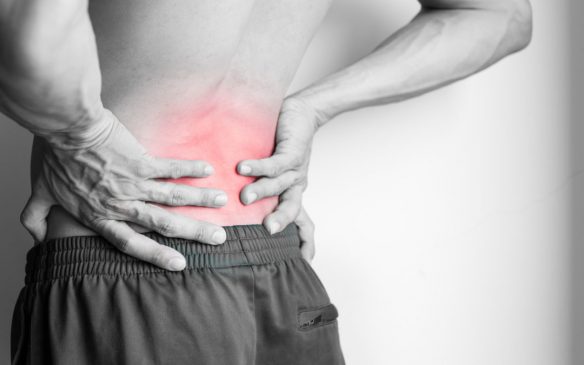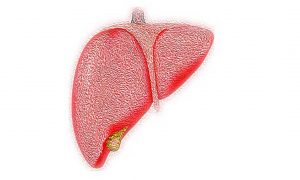Are your parents ignoring the early signs of Bursitis? Know causes, treatment and prevention tips for the hidden joint condition that causes pain and weakness
Bursitis is the inflammation of a bursa – a small, fluid-filled sac located beneath the skin and over the joints. The bursa acts as a cushion, reducing friction and allowing smooth movement between tendons, muscles and bones but when inflamed, bursitis causes pain, swelling and discomfort in the affected area.
In other words, bursitis is a condition in which the fluid bags called bursae around our joints become inflamed. This bursa acts as a cushion between our joints and bones, which makes it easier to move but when this bursa becomes inflamed, it is called bursitis and generally, the problem of bursitis is seen most in the shoulder, elbow and hip.
Read More: How Obesity Increases The Risk Of Digestive Cancer? 5 Things To Know
Symptoms:
In an interview with HT Lifestyle, Dr Indrajeet Agrawal, Director – Rheumatology at Marengo Asia Hospitals in Gurugram, shared, “Bursitis is primarily characterised by pain and stiffness surrounding the inflamed bursa, which can cause discomfort and difficulty moving. Additionally, the afflicted area could seem red, bloated and sensitive to the touch. Bursitis typically affects the shoulders, elbows and hips but it can also happen in places like the knees and the region around the big toes.”
Bringing his expertise to the same, Dr Akhilesh Yadav, Associate Director – Orthopaedics and Joint Replacement at Max Hospital in Vaishali, listed the symptoms as:
1. Swelling – Swelling is a major symptom of bursitis. The affected area becomes swollen and the area becomes red. Due to swelling, heat may also be felt in that area. Even touching the swollen area causes pain.
2. Pain – The most common symptom of bursitis is pain. When the bursa becomes inflamed, it causes pain. This pain occurs in the area where there is swelling. When you move that part or use it for any work, the pain increases, like this pain occurs in the knee, then the pain can increase when walking or running.
3. Difficulty in moving – When there is swelling in the bursa, there is stiffness in the joints. This causes difficulty in moving. For example, if it occurs in the shoulder, it becomes difficult to lift or rotate the arm. Due to stiffness in the joints, it becomes difficult to do everyday tasks.
4. Weakness – Due to bursitis, weakness is felt in the affected area. This weakness creates difficulty in moving that part. People are unable to function properly due to fatigue and weakness. For example, if it occurs in the heels, one may feel tired and weak while walking in the legs.
Read More: Govt Probes First Suspected Mpox Case, Urges Public To Stay Calm
Causes:
Dr Indrajeet Agrawal revealed, “Repetitive motions, such mopping floors or spending a lot of time kneeling, can cause bursitis. Infections by bacteria, gout, psoriatic arthritis and rheumatoid arthritis are among other illnesses that might cause it. Bursitis is more common in older people, diabetics, heavy drinkers and people with impaired immune systems.”
Dr Akhilesh Yadav elaborated –
1. Overuse: Overuse of a particular joint can cause inflammation of the bursa.
2. Injury: Injury or shock can cause inflammation of the bursa.
3. Infection: Sometimes bursitis can also be caused by bacteria or other infections.
4. Arthritis: Arthritis or other joint diseases can also cause bursitis.
Diagnosis:
According to Dr Indrajeet Agrawal, bursitis diagnosis requires a thorough medical history and physical examination. Blood tests, bursa fluid analysis and imaging studies like MRIs and ultrasounds are further diagnostic procedures that can determine the amount of inflammation and rule out other illnesses.
Read More: Essential Nutrients for Bone Health: Key to Preventing Osteoporosis in Women
Treatment:
Dr Indrajeet Agrawal highlighted, “Conservative therapy is effective in the majority of bursitis patients. NSAID gels or anti-inflammatory medicines, cold packs, and resting the afflicted area can all help reduce symptoms. In rare instances, if an infection is detected, a corticosteroid injection or antibiotics might be required. Strength and mobility can also be restored with the help of physiotherapy. Surgery is not always necessary, although it is an option if all other therapies are unsuccessful.”
Prevention:
Dr Indrajeet Agrawal suggested, “Avoiding repetitive motions and treating underlying diseases such as rheumatoid arthritis are key to preventing bursitis. Bursitis can also be prevented by adopting protective clothing and maintaining good posture when engaging in activities.”
Dr Akhilesh Yadav advised, “Some important measures can be adopted to avoid bursitis. First of all, the joints should be given more rest, so that the swelling can reduce. Applying ice on the swollen area provides relief from pain and swelling. Doing light and proper exercise maintains the strength of the joints. It is important to adopt safety measures to protect joints from injury. Wearing proper and comfortable shoes reduces stress on the feet. By adopting these measures you can avoid bursitis and keep your joints healthy.”
Disclaimer: This article is for informational purposes only and not a substitute for professional medical advice. Always seek the advice of your doctor with any questions about a medical condition.





































